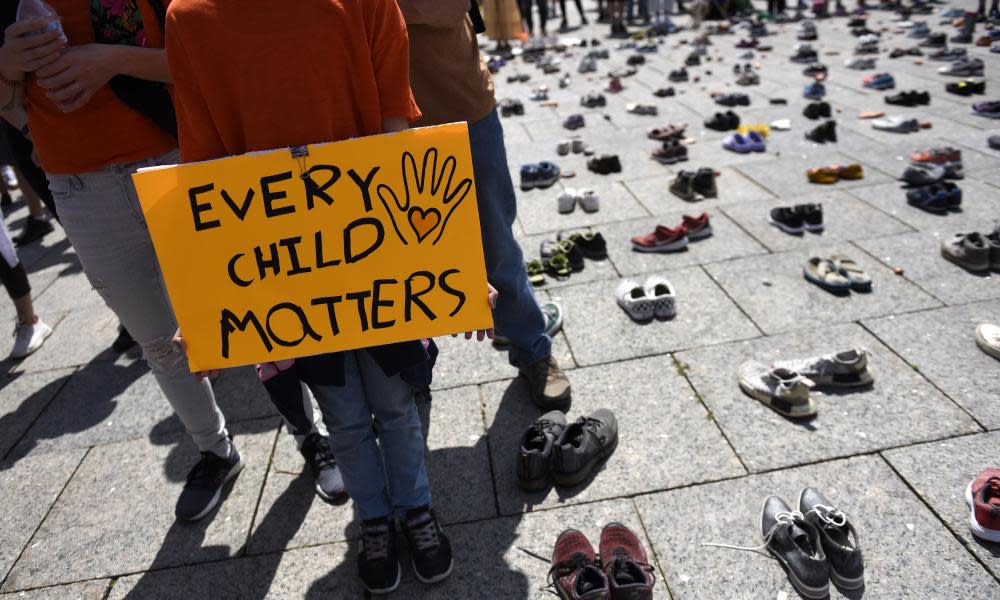Nearly 100 ‘potential human burials’ discovered at British Columbia school

Residential school operated between 1891 and 1981 and has a dark history abuse, becoming latest to come under scrutiny in Canada
A First Nation in Canada says it has discovered 93 potential grave sites on the grounds of a former residential school.
The chief and council of Williams Lake First Nation said that a preliminary search of St Joseph’s Mission Residential School had revealed “potential human burials” in a small portion of the school’s sprawling grounds.
“This journey has led our investigation team into the darkest recesses of human behaviour,” said Kúkpi7 (chief) Willie Sellars on Tuesday.
The school operated in the province of British Columbia between 1891 and 1981 and has a dark history abuse. Many students ran away and others tried to kill themselves. One child died of exposure in the wilderness after fleeing.
“At the time, the coroner’s service and RCMP saw no reason to investigate the death as the child was ‘only an Indian,’” he said.
Sellars said the investigation had exacted a heavy on toll survivors.
“Our team has recorded not only stories regarding the murder and disappearance of children and infants, they have listened to countless stories of systematic torture, starvation, rape and sexual assault of children at St Joseph’s Mission,” he said.
The investigation found evidence of children’s bodies being disposed nearby rivers and lakes and evidence the school’s incinerator had been used to dispose of children, said Sellars. Murray Sinclair, who led the country’s Truth and Reconciliation Commission, previously told the Guardian of similar stories.
Canada’s legacy of residential schools has come under renewed scrutiny ever since the Tk’emlúps te Secwépemc Nation announced last May that had discovered that was believed to be more than 200 unmarked graves at the former Kamloops Indian Residential School.
Over more than a century, at least 150,000 Indigenous children were taken from their families and forced to attend the schools, many of which were run by the Catholic church. Children were forcibly converted to Christianity, given new names and were prohibited from speaking their native languages. The last residential school closed in the 1990s.
Only a portion of the 470 hectares have been searched. Of the 93 potential graves identified, 50 were outside the school’s cemetery said Whitney Spearing, the lead investigator.
Related: ‘There are bodies here’: survivors braced as search begins at Canada’s oldest residential school
“It must be emphasized that no geophysical investigation can provide certainty into the presence of human remains,” she said. “Excavation is the only technique that will provide answers as to whether human remains are present.”
Sellars said the community will hold discussions over whether or not to excavate the sites, a fraught question that many nations across the country are dealing with.
But Tuesday’s announcement validates the stories of survivors, he said.
“For decades there were reports of neglect and abuse at the St Joseph’s Mission, and worse, there were reports of children dying or disappearing from the facility,” he said.“For the bulk of St Joseph’s Mission’s history, these reports were at best given no credence.”


